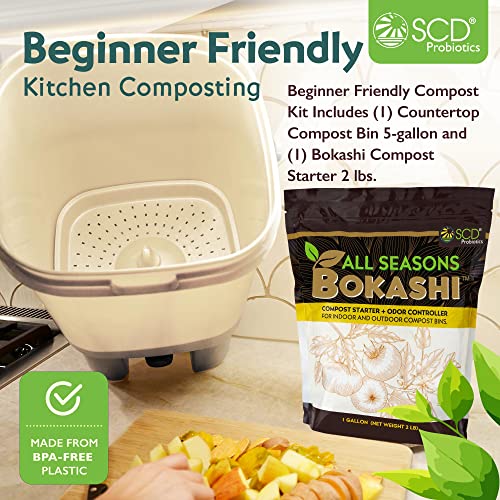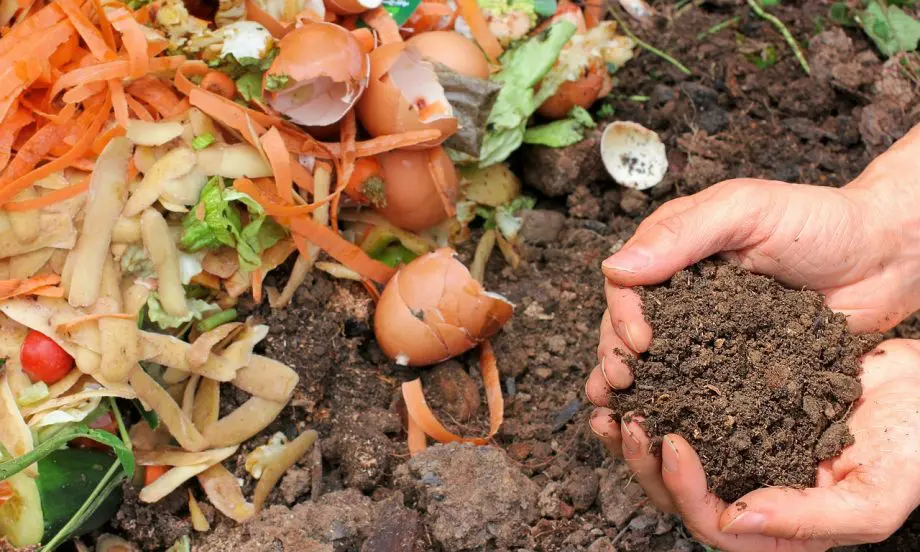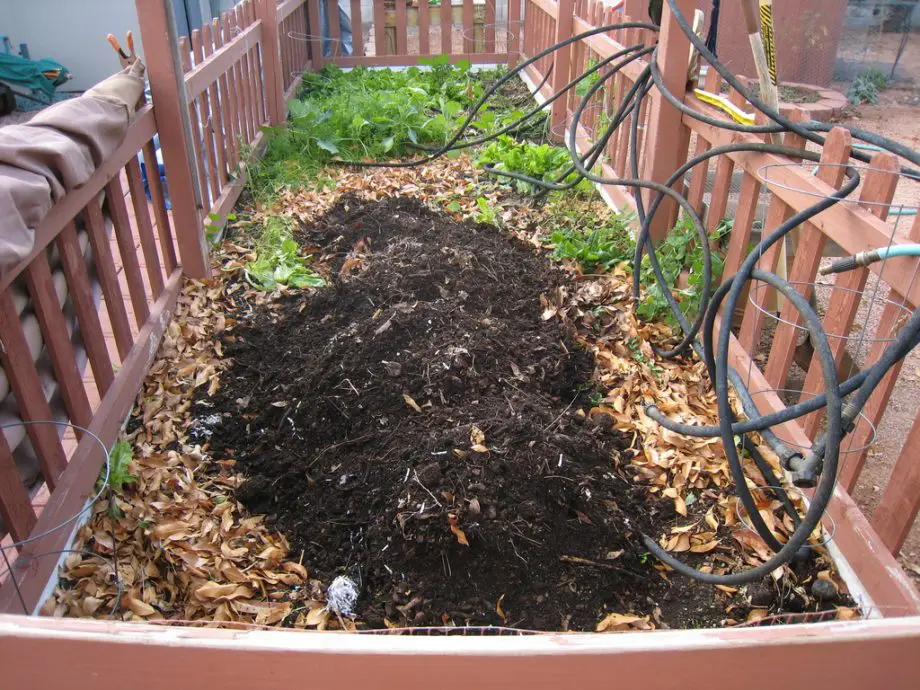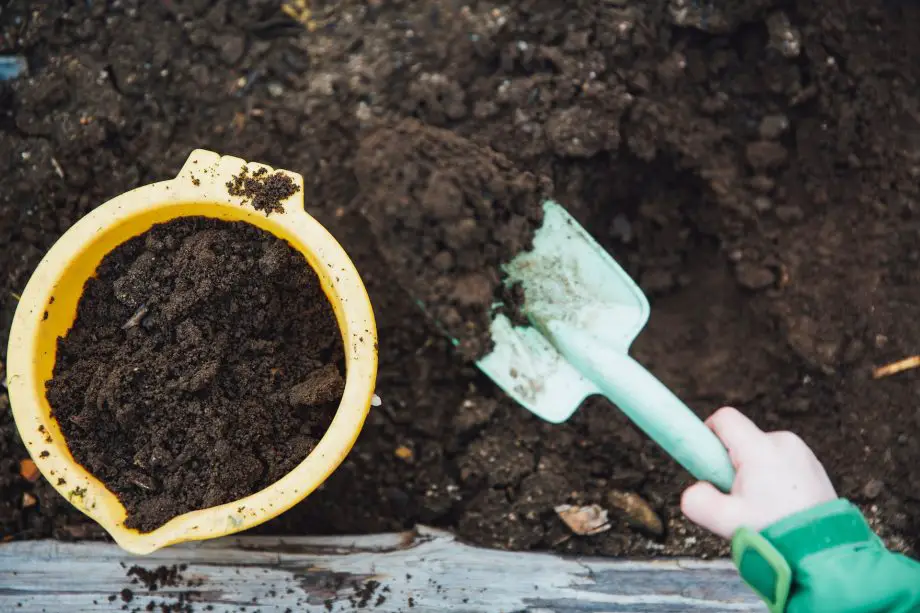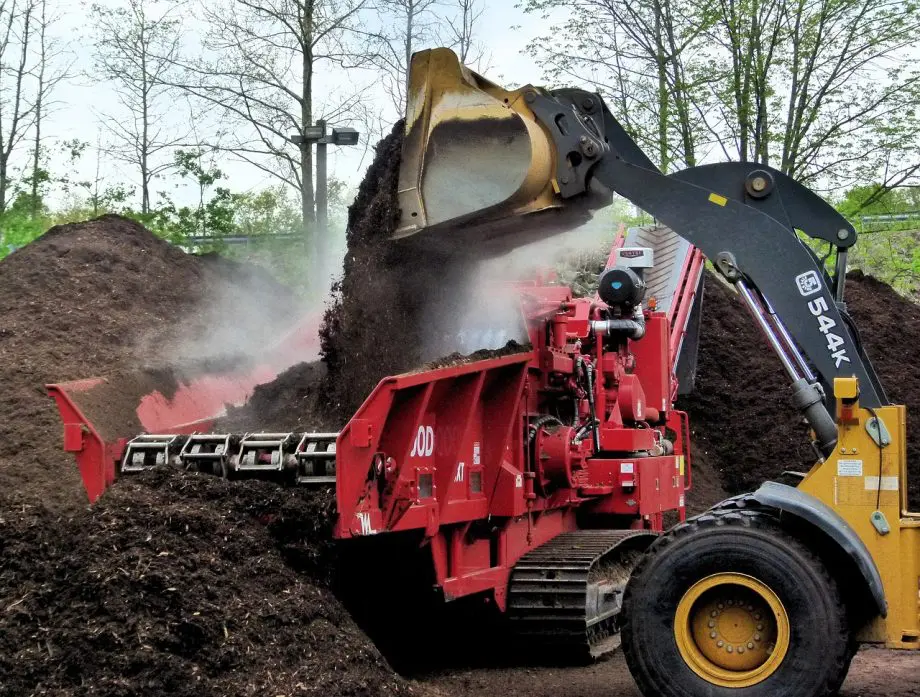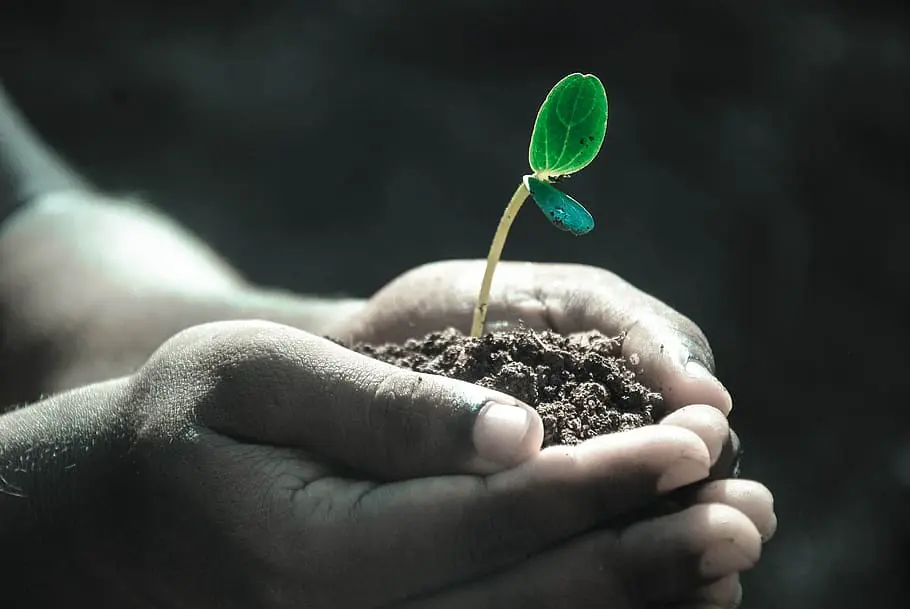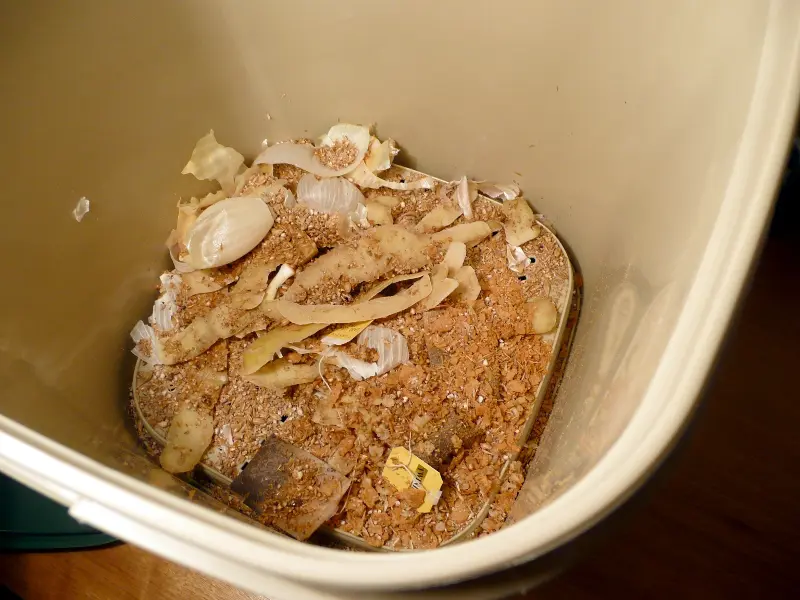
Discover the magic of Bokashi composting! Learn how this Japanese method transforms your kitchen waste into a nutrient-rich soil enhancer. What is Bokashi composting? Find out here!
Ever wondered, ‘What is Bokashi composting?’ Well, you’re in for a treat!
Bokashi composting is a game-changer for garden enthusiasts and eco-conscious folks alike.
It’s a unique, efficient, and surprisingly simple method of turning your kitchen scraps into a garden’s best friend.
So, buckle up as we dive into the fascinating world of Bokashi composting and explore how this Japanese innovation is revolutionizing sustainable waste management.
What is Bokashi Composting?
Welcome to our deep dive into the world of Bokashi composting! If you’ve found yourself asking, what is Bokashi composting? then you’re in the right place.
This unique, sustainable method of composting is not only fascinating but also incredibly beneficial for our gardens and the environment.
In this post, we’ll explore everything from the origins of Bokashi composting to its process, benefits, and even how it compares to traditional composting methods.
We’ll also tackle some frequently asked questions to quench your curiosity.
So, let’s embark on this journey to uncover the wonders of Bokashi composting together!
Brief Overview of Bokashi Composting
Let’s kick things off with a quick introduction to Bokashi composting.
Now, you might be thinking, Another composting method? But trust me, Bokashi is something special.
Originating from Japan, Bokashi composting is a unique method that uses a mix of microorganisms to ferment organic waste.
Yes, you read that right, it’s fermentation, not decomposition! This process is quick, efficient, and best of all, it doesn’t produce any foul odors.
Plus, it’s a great way to recycle your kitchen waste, including things you can’t usually compost like meat and dairy.
Bokashi is a process that converts food waste and similar organic matter into a soil amendment which adds nutrients and improves soil texture. From wikipedia
Importance of Sustainable Waste Management
Now, let’s talk about why all this matters. Sustainable waste management is more than just a buzzword it’s a crucial part of protecting our environment.
Every year, we generate billions of tons of waste, much of which ends up in landfills, contributing to pollution and greenhouse gas emissions.
But with methods like Bokashi composting, we can turn our waste into something useful.
It’s a win-win situation: we reduce the amount of waste going to landfills and create a nutrient-rich soil enhancer for our gardens.
So, by embracing Bokashi composting, we’re not just helping our plants thrive; we’re also doing our part for Mother Earth.
Bokashi Composting
Alright, let’s dive a little deeper into the world of Bokashi composting.
If you’ve ever found yourself standing in your kitchen, peeling vegetables or finishing up dinner, and wondering where all those scraps could go instead of the trash, Bokashi composting might just be your answer.
It’s a method that’s as fascinating as it is beneficial, and it’s about to become your new favorite topic.
So, let’s get to it and explore the ins and outs of Bokashi composting!
Definition and Origin of Bokashi Composting
First things first, let’s define Bokashi composting. Bokashi is a method of composting that relies on fermentation rather than decomposition.
It’s a bit like making sauerkraut, but instead of cabbage, we’re fermenting kitchen waste!
This method originated in Japan and has been gaining popularity worldwide due to its efficiency and ease of use.
The Role of Dr. Teruo Higa in the Development of Bokashi Composting
Now, we can’t talk about Bokashi composting without mentioning Dr. Teruo Higa. This professor is from the University of Ryukyus in Okinawa, Japan.
He played a pivotal role in the development of Bokashi composting in the early 1980s.
Dr. Higa discovered a specific group of microorganisms that could accelerate the fermentation process, making Bokashi composting a quick and efficient method of turning waste into a nutrient-rich soil enhancer.
The Meaning of Bokashi in Japanese
Finally, let’s talk about the term Bokashi. In Japanese, Bokashi means fermented organic matter, which perfectly describes the process and the end product of this composting method.
It’s a simple term for a process that can have a profound impact on our waste management practices and our gardens.
So, next time you’re sprinkling Bokashi bran onto your kitchen scraps, remember, you’re partaking in a tradition of fermentation that dates back centuries!
The Bokashi Composting Process
Ready to roll up your sleeves and get into the nitty-gritty of Bokashi composting?
In this section, we’re going to walk through the Bokashi composting process step by step.
Don’t worry, it’s not as complicated as it might sound. In fact, one of the best things about Bokashi composting is its simplicity.
So, whether you’re a seasoned gardener or a composting newbie, you’ll find this process easy to follow. Let’s get started!
The Role of Effective Microorganisms in Bokashi Composting
Let’s start with the stars of the show: the effective microorganisms. These tiny powerhouses are the secret sauce in Bokashi composting.
They’re a mix of beneficial bacteria and yeasts that kickstart the fermentation process.
When you add them to your kitchen scraps, they get to work breaking down the organic material, turning your waste into nutrient-rich compost.
The Use of Bokashi Bran
Next up, we have Bokashi bran. This is where those effective microorganisms live.
The bran acts as a carrier and food source for the microorganisms.
When you add Bokashi bran to your compost bucket, you’re essentially introducing millions of these beneficial microorganisms to your kitchen waste.
The Process of Anaerobic Fermentation
Now, onto the process itself. Bokashi composting is an anaerobic process, which means it happens without oxygen.
This is different from traditional composting, which requires air. In Bokashi composting, the microorganisms ferment the organic material in a sealed bucket.
This is why it’s important to keep your Bokashi bucket airtight!
The Use of a Bokashi Bucket
Speaking of the bucket, let’s talk about that. A Bokashi bucket is a special type of compost bin designed for Bokashi composting.
It’s airtight to create the anaerobic environment needed for fermentation.
It also has a spigot at the bottom for draining off the liquid that forms during the process, known as Bokashi tea.
The Fermentation Period
The fermentation period in Bokashi composting is surprisingly short.
In just about 10 to 14 days, your kitchen scraps can be transformed into pre-compost.
This is much quicker than traditional composting, which can take several months.
Burying the Ferment in the Garden
Once the fermentation process is complete, the next step is to bury the pre-compost in your garden.
This might sound strange, but it’s an important part of the process. The soil helps to further break down the fermented material, turning it into a rich, nutrient-dense compost that your plants will love.
Just dig a hole or trench, add the pre-compost, and cover it with soil. In a few weeks, you’ll have a patch of supercharged soil ready for planting!
If you are indoors you can use a plastic storage bin filled with soil or coco coir to bury your bokashi compost.
Benefits of Bokashi Composting
Now that we’ve covered the ‘what’ and ‘how’ of Bokashi composting, let’s delve into the ‘why’.
Why should you consider Bokashi composting? What makes it stand out from other composting methods?
Well, as it turns out, Bokashi composting comes with a whole host of benefits that make it a fantastic choice for both your garden and the environment.
So, let’s dive in and explore the many advantages of this unique composting method!
The Ability to Handle Meat and Dairy Products
One of the standout benefits of Bokashi composting is its ability to handle meat and dairy products.
Traditional composting methods often advise against adding these items to your compost pile because they can attract pests and produce unpleasant odors.
But with Bokashi composting, you can compost all your kitchen scraps, including meat and dairy.
This not only reduces waste but also means you’re getting more nutrient diversity in your compost.
Suitability for Small Spaces
Next up, let’s talk about space. Not everyone has a large backyard or garden where they can set up a traditional compost pile.
The beauty of Bokashi composting is that it’s perfect for small spaces.
All you need is a Bokashi bucket, which is compact and sealed, so you can compost without worrying about smells or attracting pests.
This makes Bokashi composting an excellent option for apartment dwellers or those with small yards.
Reduction of Waste Sent to Municipal Waste-Management Facilities
Finally, Bokashi composting can significantly reduce the amount of waste we send to municipal waste-management facilities.
Every bit of kitchen waste you compost is a bit less that ends up in the landfill.
And considering that food waste makes up a significant portion of household waste, adopting Bokashi composting can have a substantial impact on reducing landfill waste.
Plus, it’s a great feeling knowing you’re doing your part to help the environment while creating nutrient-rich compost for your plants!
Comparing Bokashi Composting to Traditional Composting
By now, you’re probably getting a good sense of what Bokashi composting is all about. But how does it stack up against traditional composting methods?
Are there significant differences, and if so, what are they? In this section, we’re going to put Bokashi composting and traditional composting side by side to see how they compare.
Whether you’re a seasoned composter considering a new method, or a composting newbie trying to decide where to start, this comparison should give you a clearer picture!
Differences in the Composting Process
First off, let’s look at the composting process. Traditional composting is an aerobic process, which means it requires oxygen.
It involves layering green and brown materials in a compost bin or pile, turning it regularly to maintain airflow, and waiting for nature to do its thing.
This process can take several months.
On the other hand, Bokashi composting is an anaerobic process, which means it happens without oxygen.
It involves layering kitchen waste with Bokashi bran in a sealed bucket and letting it ferment.
This process is much quicker, typically taking only 10 to 14 days.
The Types of Waste Each Method Can Handle
When it comes to the types of waste each method can handle, Bokashi composting has a slight edge.
Traditional composting can handle a wide range of organic materials, including fruit and vegetable scraps, coffee grounds, grass clippings, leaves, and more.
However, it’s generally recommended to avoid adding meat and dairy products to a traditional compost pile because they can attract pests and produce unpleasant odors.
Bokashi composting, on the other hand, can handle just about all kitchen waste, including meat and dairy products. This means you can compost more of your waste with Bokashi composting.
The End Products of Each Method
Lastly, let’s compare the end products of each method. Traditional composting produces compost, a rich, crumbly material that’s often referred to as black gold for its ability to improve soil health and fertility.
Bokashi composting produces a type of pre-compost that needs to be buried in the soil to finish the composting process.
After a few weeks in the soil, it breaks down into nutrient-rich compost.
Additionally, the Bokashi process also produces a liquid known as Bokashi tea, which can be used as a fertilizer for plants.
FAQs about Bokashi Composting
Alright, we’ve covered a lot of ground on Bokashi composting, but you might still have a few questions lingering. And you’re not alone!
There are some common queries that often pop up when discussing Bokashi composting.
So, in this section, we’re going to tackle some of those frequently asked questions head-on.
Whether you’re wondering about the composting timeline or curious about the potential downsides, we’ve got you covered. Let’s dive into these FAQs!
Q: Is Bokashi better than composting?
A: It’s not necessarily a matter of one being better than the other, but rather which one suits your needs and circumstances better.
Bokashi composting is quicker, can handle more types of waste (including meat and dairy), and is suitable for small spaces.
Traditional composting, on the other hand, can handle larger volumes of waste and doesn’t require the purchase of Bokashi bran.
Q: How long does Bokashi take to decompose?
A: The Bokashi fermentation process typically takes about 10 to 14 days.
After that, the pre-compost needs to be buried in the soil, where it will break down further over a few weeks.
Q: What can you not put in Bokashi?
A: Bokashi composting can handle most kitchen waste, including things like meat and dairy that you can’t put in a traditional compost pile.
However, it’s best to avoid putting in large bones or excessive amounts of liquid.
Q: What is the main problem with Bokashi composting?
A: One potential challenge with Bokashi composting is that it requires a bit more upfront setup and ongoing maintenance compared to a simple compost pile.
You’ll need a special Bokashi bucket and Bokashi bran, and you’ll need to regularly drain off the Bokashi tea that forms during the process.
Q: How does Bokashi composting work?
A: Bokashi composting works by fermenting kitchen waste in a sealed bucket using a special Bokashi bran that’s inoculated with effective microorganisms.
After about 10 to 14 days, the fermented waste (or pre-compost) can be buried in the garden where it breaks down into nutrient-rich compost.
Q: What are the disadvantages of Bokashi?
A: Some potential disadvantages of Bokashi composting include the need for special equipment (a Bokashi bucket and Bokashi bran), the need to regularly drain off the Bokashi tea, and the need to bury the pre-compost in the garden after fermentation.
Q: Do worms like Bokashi?
A: Yes, worms love Bokashi! The fermented waste from Bokashi composting is a great addition to a worm bin.
It’s full of beneficial microorganisms and nutrients that worms thrive on.
Just be sure to let the Bokashi pre-compost age a bit in the soil before adding it to a worm bin, as the initial acidity of the Bokashi pre-compost can be harmful to worms.
Conclusion
We’ve journeyed through the fascinating world of Bokashi composting, from its origins and process to its benefits and how it compares to traditional composting.
We’ve even tackled some of the most common questions about this method.
But as we wrap up, let’s take a moment to reflect on why Bokashi composting is more than just a composting method.
It’s a step towards sustainable living, a way to give back to our planet, and a tool to nurture our gardens.
So, let’s conclude our exploration and look at the bigger picture!
Recap of the Importance and Benefits of Bokashi Composting
As we wrap up our deep dive into Bokashi composting, let’s revisit why this method is so significant.
Bokashi composting is more than just a way to manage kitchen waste.
It’s a sustainable practice that helps reduce our environmental footprint by diverting waste from landfills.
Plus, it transforms our kitchen scraps into a nutrient-rich soil enhancer, perfect for boosting the health and productivity of our gardens.
From its ability to handle a wide range of waste, including meat and dairy, to its suitability for small spaces, Bokashi composting offers numerous benefits that make it a worthy addition to our sustainable living practices.
Encouragement for Readers to Try Bokashi Composting
Now, having learned about Bokashi composting, why not give it a try?
It’s a simple, efficient, and rewarding process.
Whether you’re an experienced gardener looking for a new composting method or a composting newbie ready to take your first step, Bokashi composting is a great choice.
Remember, every bit of waste we compost is a step towards a healthier planet.
So, grab a Bokashi bucket, start collecting your kitchen scraps, and join the Bokashi composting community. Your garden (and the planet) will thank you!


